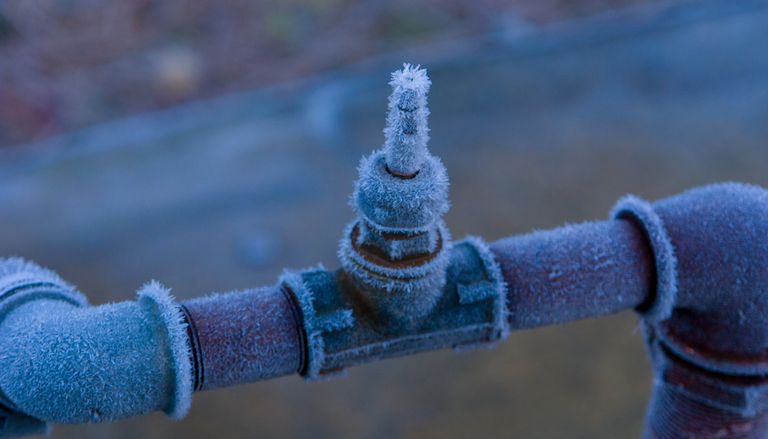Protecting Against Frozen Plumbing in Winter: Key Tips
Protecting Against Frozen Plumbing in Winter: Key Tips
Blog Article
Here further down you'll find lots of first-rate expertise when it comes to Prevent Frozen Pipes .

Winter can ruin your pipes, especially by freezing pipelines. Right here's just how to stop it from taking place and what to do if it does.
Intro
As temperatures decrease, the risk of icy pipelines boosts, possibly resulting in costly fixings and water damages. Recognizing how to stop icy pipes is crucial for home owners in chilly climates.
Recognizing Frozen Pipelines
What causes pipelines to ice up?
Pipes ice up when exposed to temperature levels below 32 ° F (0 ° C) for extended periods. As water inside the pipelines ices up, it expands, putting pressure on the pipe walls and potentially creating them to burst.
Risks and problems
Icy pipelines can bring about water disturbances, building damages, and costly repairs. Ruptured pipelines can flood homes and create substantial structural damages.
Signs of Frozen Piping
Recognizing frozen pipelines early can prevent them from rupturing.
Just how to determine icy pipes
Try to find decreased water flow from taps, unusual odors or sounds from pipelines, and noticeable frost on subjected pipelines.
Avoidance Tips
Insulating susceptible pipelines
Wrap pipelines in insulation sleeves or use heat tape to secure them from freezing temperature levels. Concentrate on pipelines in unheated or external areas of the home.
Heating techniques
Keep interior spaces effectively heated up, particularly locations with pipes. Open cabinet doors to allow warm air to flow around pipelines under sinks.
Safeguarding Exterior Plumbing
Yard hoses and outside taps
Separate and drain garden tubes before wintertime. Mount frost-proof spigots or cover outside taps with shielded caps.
What to Do If Your Pipes Freeze
Immediate actions to take
If you suspect icy pipelines, maintain taps open up to soothe stress as the ice thaws. Make use of a hairdryer or towels taken in hot water to thaw pipes gradually.
Long-Term Solutions
Structural adjustments
Take into consideration rerouting pipelines far from outside wall surfaces or unheated areas. Include additional insulation to attics, cellars, and crawl spaces.
Upgrading insulation
Buy high-grade insulation for pipes, attic rooms, and walls. Appropriate insulation assists keep consistent temperature levels and reduces the danger of icy pipes.
Conclusion
Avoiding icy pipelines requires aggressive steps and quick responses. By recognizing the causes, signs, and safety nets, property owners can protect their pipes throughout cold weather.
5 Ways to Prevent Frozen Pipes
Drain Outdoor Faucets and Disconnect Hoses
First, close the shut-off valve that controls the flow of water in the pipe to your outdoor faucet. Then, head outside to disconnect and drain your hose and open the outdoor faucet to allow the water to completely drain out of the line. Turn off the faucet when done. Finally, head back to the shut-off valve and drain the remaining water inside the pipe into a bucket or container. Additionally, if you have a home irrigation system, you should consider hiring an expert to clear the system of water each year.
Insulate Pipes
One of the best and most cost-effective methods for preventing frozen water pipes is to wrap your pipes with insulation. This is especially important for areas in your home that aren’t exposed to heat, such as an attic. We suggest using foam sleeves, which can typically be found at your local hardware store.
Keep Heat Running at 65
Your pipes are located inside your walls, and the temperature there is much colder than the rest of the house. To prevent your pipes from freezing, The Insurance Information Institute suggests that you keep your home heated to at least 65 degrees, even when traveling. You may want to invest in smart devices that can keep an eye on the temperature in your home while you’re away.
Leave Water Dripping
Moving water — even a small trickle — can prevent ice from forming inside your pipes. When freezing temps are imminent, start a drip of water from all faucets that serve exposed pipes. Leaving a few faucets running will also help relieve pressure inside the pipes and help prevent a rupture if the water inside freezes.
Open Cupboard Doors
Warm your kitchen and bathroom pipes by opening cupboards and vanities. You should also leave your interior doors ajar to help warm air circulate evenly throughout your home.

I discovered that page on Prevent Frozen Pipes when scouting around the internet. Sharing is nice. Who knows, you will be doing someone a favor. I thank you for reading our article about Prevent Frozen Pipes .
Click Here Report this page